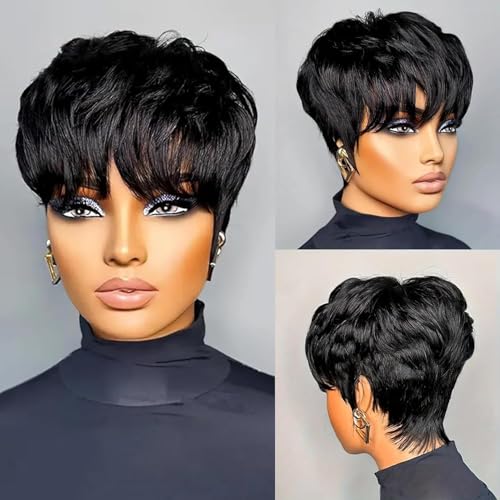Why I made this post. Thin hair can feel flat and hard to style. A pixie cut can wake it up in minutes. I wanted to show that you can get real lift with a short cut that moves with you. This collection of 30 pixie cuts proves that volume can be effortless, not loud.
Who it’s for. If your hair is fine, you want body, and you wish for a look that lasts, this is for you. If you value easier mornings and styles that stay put, you belong here. The cuts here work with different face shapes and hair textures, all aimed at boosting volume.
What you’ll get. A carefully curated set of 30 pixie cuts for thin hair. You’ll see looks that are layered, textured, blunt, and playful. Each idea comes with quick styling tips so you can add lift without a big effort. Expect simple steps you can try today.
How to get the look. Start by picking a cut that adds height at the crown. Ask for gentle layers around the crown and ears. Style with a light mousse and a diffuser to lift the roots. A quick pass with a round brush during blow-dry smooths the edges and keeps the shape. Finish with a light spray of sea salt to add texture.
Not every thin strand will hold every idea. Growth patterns and cowlicks can change the result. Keeping trims every 4 to 6 weeks helps the lift stay fresh. With simple routines, you get volume that lasts.
This guide is practical and realistic. Pick a few styles that seem right and test them at your next haircut. Bring photos and ask for small changes to suit your hair. Try one look, then adjust as needed. You will feel the difference when your hair moves with you.
1. The Classic Textured Pixie
The Classic Textured Pixie
If you want more fullness from thin hair, the classic textured pixie is a smart pick. It uses short, choppy layers that catch air and move as you walk. That air makes your hair look thicker at the crown and around the ears. Plus, it is easy to style and fits busy days.
Here is why this cut works. The layers lift strands at the roots for instant volume. Texture adds shape without heavy weight. Next, here are practical steps to get the look.
– Start with a volumizing shampoo to clean and lift from the roots.
– Apply a texturizing spray or a light mousse to the lengths to define the layers.
– Use a small amount of light styling cream to smooth flyaways without weighing hair down.
– Dry with a blow dryer on low heat while lifting the roots with your fingers.
– Spritz a touch of sea salt spray for a casual, matte finish.
– Schedule regular trims every 4-6 weeks to keep the shape fresh.
Ready to try it? Take a photo of the classic textured pixie and show your stylist, or try it at home with a quick round of careful styling. The result is a playful lift that stays neat and easy to manage.
2. The Asymmetrical Pixie
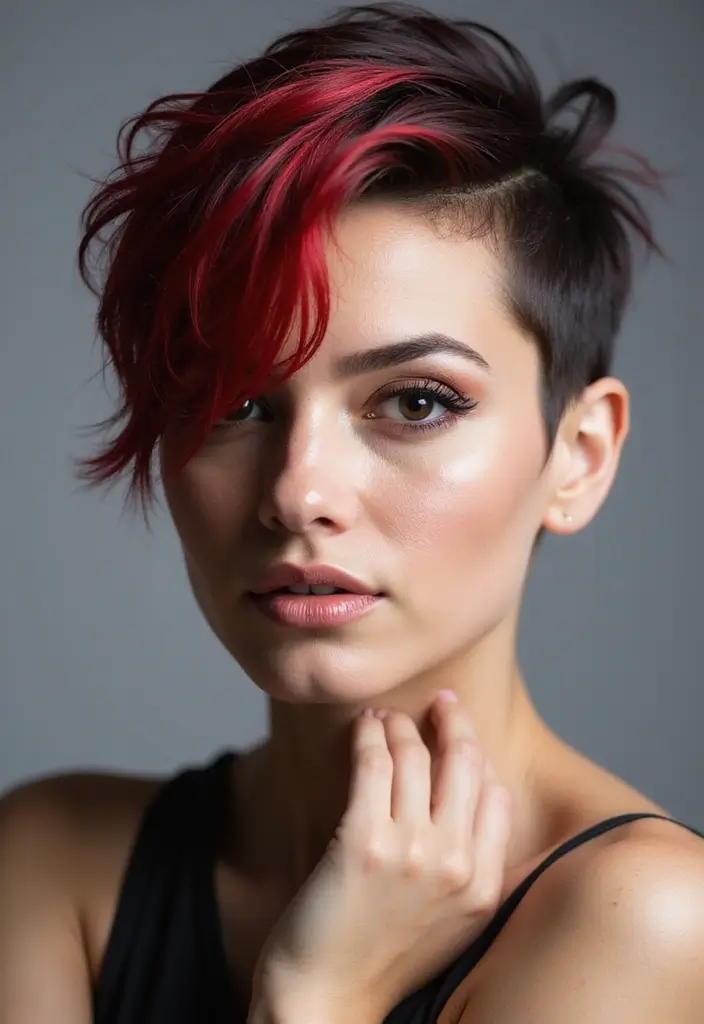
Want an eye catching cut that still feels polished? The asymmetrical pixie is for you. One side is cut shorter than the other, which makes the top look lighter and more buoyant. It adds lift where thin hair tends to lie flat.
Fine hair shines in this style. It creates shape with less weight. Pair a bold color with the cut to let the edge pop. A strong hold gel helps keep the line intact, especially for nights out.
Here is how to make it work.
– Choose which side stays shorter. A small difference reads chic.
– Part to the side to boost the asymmetry.
– Use a flat iron on the longer side to define the line.
– Spray a light root lift or mousse at the crown for volume.
– Finish with a high hold gel or wax.
Color and texture tips.
– Balayage or soft highlights add depth and catch light.
– Cool tones can sharpen the angle.
Care and timing.
– Trim every 4 to 6 weeks to keep the edge clean.
Next steps.
– Try a tight fringe or a tucked back style for a different vibe. You can do this.
3. The Choppy Pixie

If your thin hair falls flat, you want a cut that adds lift without hours of work. The choppy pixie does that with smart layers and different lengths. Short pieces near the crown pair with longer bits around the sides to fool the eye into more volume. It feels playful, not busy, and it grows out nicely.
Here is why this style works for thin hair. The layers create texture, and texture makes hair look thicker. A choppy pixie gives you bounce without heavy product. It stays easy to maintain and looks great on many face shapes.
– Adds volume at the crown.
– Creates texture with minimal effort.
– Transitions from tousled to sleek in minutes.
Next, how to style it for best results. Here are practical steps you can follow today.
1. Towel-dry your hair and rough-dry to lift the roots.
2. Warm a small amount of texturizing paste on your fingers.
3. Work the product through the top and sides, focusing at the crown.
4. Dry with a diffuser on low heat to keep natural movement.
5. Scrunch with your fingers for a messy, lived-in look.
6. For a smooth, polished finish, brush lightly and set with a tiny mist of light hairspray.
Tips for care: choose a lightweight styling cream or mousse rather than heavy oils. Sleep on a satin pillowcase to cut frizz and keep shape.
If you want a quick version, you can skip some steps and just run paste through the top while you air-dry. This is a good starting point for a pixie cut that feels full and current.
4. The Pixie Bob Hybrid

Want a cut that adds volume without looking busy? The pixie bob hybrid might be your answer. This style blends the best of a pixie and a bob. It uses longer pieces in the front to softly frame your face, while the back stays short for lift. The result is a chic, versatile look that works great on thin hair.
Why it works: the front lengths frame features and the crown stays light. It creates movement and makes fine strands feel fuller without extra weight. To boost lift, try blow-drying with a round brush, lifting at the roots and guiding the brush from root to tip.
Maintenance:
– Regular trims to keep the shape clean.
– A root-lifting powder helps push the volume at the crown.
– For a touch of drama, add a soft wave with a curling wand on special occasions.
Care tips:
– Use lightweight shampoo and conditioner so the style stays airy all day.
– Finish with a light hairspray if you need hold.
It pairs well with soft waves and a touch of texture spray for everyday wear.
Next steps:
– If you want a modern cut that looks polished with minimal effort, give the pixie bob hybrid a try. You can tweak it to your taste.
5. The Sleek Pixie

If you want a polished look with little fuss, the sleek pixie fits. This cut uses clean lines and a sharp silhouette. For thin hair, it shines by showing gloss and texture instead of trying to add bulk. You can style it fast even on busy mornings.
Here is how to get the look quickly.
– Step 1: Ask for a longer top so light hits your crown and edges stay neat.
– Step 2: Towel dry, then blow-dry with a brush until smooth.
– Step 3: Run a straightener over small sections to keep the lines clean.
– Step 4: Warm a pea-sized drop of shine serum and smooth through lengths.
– Step 5: For a crisp outline, dab strong-hold gel at the temples.
This style is low maintenance. It dries fast, travels well, and stays put from morning to night. It gives your face a clean frame as you move through the day.
Next steps: carry a comb for a quick touch up.
Quick Tips
– Keep your hair healthy with regular conditioning treatments.
– A side part can add a touch of elegance.
– Use a strong-hold gel for all-day staying power.
With these steps, you get a sleek pixie that catches light, not extra volume. It stays neat from desk to dinner.
6. The Textured Undercut

If your thin hair looks flat, you want a cut that adds lift without a lot of work. The textured undercut uses short sides and a longer top. That length on top creates movement and light catching texture, so your hair looks fuller.
With this style, you have options. A sea salt spray gives a beachy, tousled finish. If you prefer a sleeker look, brush the top back and dry it with a round brush for smooth shine. The goal is texture, not stiffness. The top should move when you touch it.
Texture on top helps create volume. You can change the vibe in minutes by how you style it. Keep the sides tidy to contrast the airy crown.
Maintenance helps this cut stay sharp. Plan trims every 4 to 6 weeks to keep the sides clean and the top balanced. A quick color tweak can add depth if you want more dimension.
Practical tools make a difference. A light texturizing cream can define the top layers without weighing hair down. Pair it with a low-heat blow dry for best results.
– Schedule regular trims to keep the shape fresh.
– Add subtle color accents to boost depth.
– Use a light texturizing cream to define the top layers.
7. The Curly Pixie

If you think curls can’t rock a pixie, think again. The curly pixie brings a playful vibe and keeps a flattering shape. It’s designed for thin hair, giving volume at the crown so your strands look fuller with almost no effort. The cut is short around the ears and longer on top, which lets curls move and bounce.
Here is why it works for you. The longer top lets your curls spring into life. Short sides take away weight, so your hair feels lighter and looks thicker. You get instant lift without cramming your day with heavy styling.
Styling steps
– Start with damp hair.
– Scoop a pea-sized curl defining cream into your palms and smooth from roots to ends.
– Use your fingers to distribute the product evenly, then lift the roots gently.
– Scrunch at the crown to encourage bounce and keep curls round.
– Twist the ends a bit to sharpen natural spirals.
– Let hair air dry or diffuse on low heat for best texture.
– Try not to touch the curls while they dry to avoid frizz.
– If you want a light hold, mist with a flexible-hold spray.
Color and texture options can add depth. A few colorful highlights or lowlights bring out dimension in curls. Keep the shade subtle so it looks natural with your base color.
Maintenance tips
– Use sulfate-free shampoo to keep curls defined.
– Schedule regular trims to maintain shape and bounce.
– Experiment with parting to change your silhouette.
Curls and pixie cuts are a match made in heaven! The curly pixie adds volume effortlessly, giving you playful bounce and a flattering shape. Embrace your curls and let them shine with this stunning look!
8. The Faux Hawk Pixie

If you want more height in thin hair without losing its soft touch, the faux hawk pixie can be your go-to. This cut uses longer layers on top that you lift upward. The result is height at the crown and a bold, eye-catching silhouette.
Why this cut helps thin hair
– It creates volume where you need it most, at the top.
– Short sides keep the shape clean and easy to manage.
– It can read as punk or polished, depending on how you style it.
Here is why it works for you: the longer top holds its own weight, so you don’t rely on a lot of product to get lift. A little texture goes a long way, and you can dial the edge up or down to fit your day.
How to style in 5 simple steps
– Step 1: Start with damp hair. Apply a strong-hold mousse from roots to mid-length for grip and hold.
– Step 2: Lift the crown as you blow-dry. Use your fingers or a round brush to push the top upward.
– Step 3: Add texture. Spray a texturizing product at the crown and work it through with your fingers to create grit and volume.
– Step 4: Shape the sides. Tuck or smooth the back and sides so the top really stands out.
– Step 5: Set lightly. Finish with a light mist of hairspray to keep the lift without stiffness.
Daily wear tips
If you want a calmer look, slick the top straight back. This reduces drama but keeps the shape. You can still enjoy a hint of height when you need it.
Care and upkeep
Get trims every 4–6 weeks to keep the top layers looking fresh. Use lighter products on the sides to avoid weighing them down. If you have very fine hair, skip heavy gels and choose products that add texture without a heavy feel.
Now you have a plan to get real lift with a faux hawk pixie. You’ll feel the top hair hold its own with less effort, and you can switch between bold and subdued anytime.
9. The Soft Pixie with Bangs
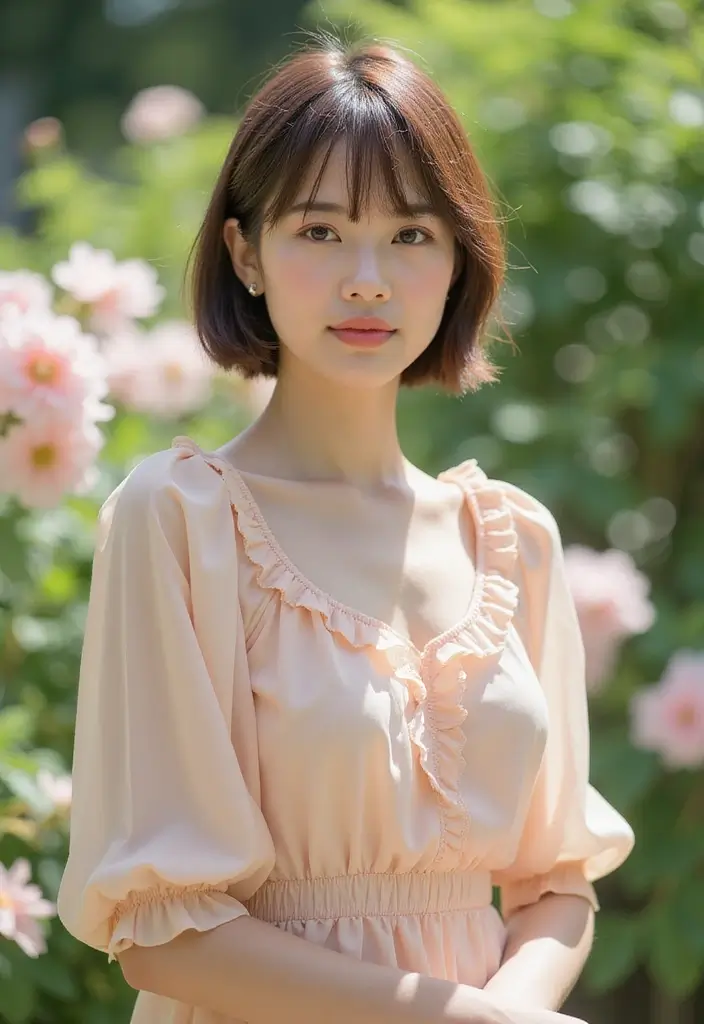
If you have thin hair, you might worry a pixie will look flat. The soft pixie with bangs changes that. It adds gentle lift and a youthful vibe while keeping your hair light.
Here is why this style works. Wispy, side-swept bangs blend with the cut. They frame your eyes and soften the edge. The result is a look that feels airy, not heavy. You get a feminine touch without sacrificing easy care.
How to style it at home. Start with clean, towel-dried hair. Use a light mousse to give subtle volume from roots to ends. Skip heavy gels or creams that weigh hair down. Work the product in with your fingertips, not your brush.
Next, blow-dry with a round brush. Lift the roots as you dry, especially at the crown. Aim for a gentle flip at the tips of the bangs so they blend into the sides. A cool blast at the end helps set the lift and keep it touchable.
Care tips
– Regular trims keep the bangs fresh and the line soft.
– Add a touch of layering around the bangs for a natural, airy look.
– Use a round brush while blow-drying to boost lift at the roots.
– If you see weight near the sides, texturize lightly with a small amount of product at mid-length.
Want more volume? Part the bangs slightly to the side and let a few wisps fall forward. This creates movement and makes your whole style feel fuller.
10. The Messy Pixie

Why the messy pixie helps thin hair
You want a cut that makes fine hair look fuller without heavy products. The messy pixie adds texture, not weight. Short layers catch light and soft wisps stay around your face. It’s easy to wear all day and still looks bright at night. This look travels well from work to weekend.
Who is this for
If your hair is thin or fine, this cut adds volume without bulk. It works on oval, heart, or round faces and hides a flat crown. You can wear a side part or tuck a strand behind your ear.
How to style in 5 steps
– Lightly mist a texturizing spray from roots to mid lengths. Let it grip.
– Flip head forward or upside down and scrunch with your fingers. Aim for random, natural texture.
– Dry with a diffuser on low heat or air dry while you work texture into shape.
– Lift small root sections with your fingertips. Tiny boosts make hair look thicker.
– Finish with a quick spray of dry shampoo at the roots for lasting lift.
Tips for best results
– Let natural texture shine. Don’t brush flat.
– Skip heavy products. A light mousse or low-hold wax works best.
– Focus on the crown for height without stiffness.
– For very smooth hair, add a touch of sea salt spray before you style.
– Play with your part to tweak the look.
11. The Long Pixie
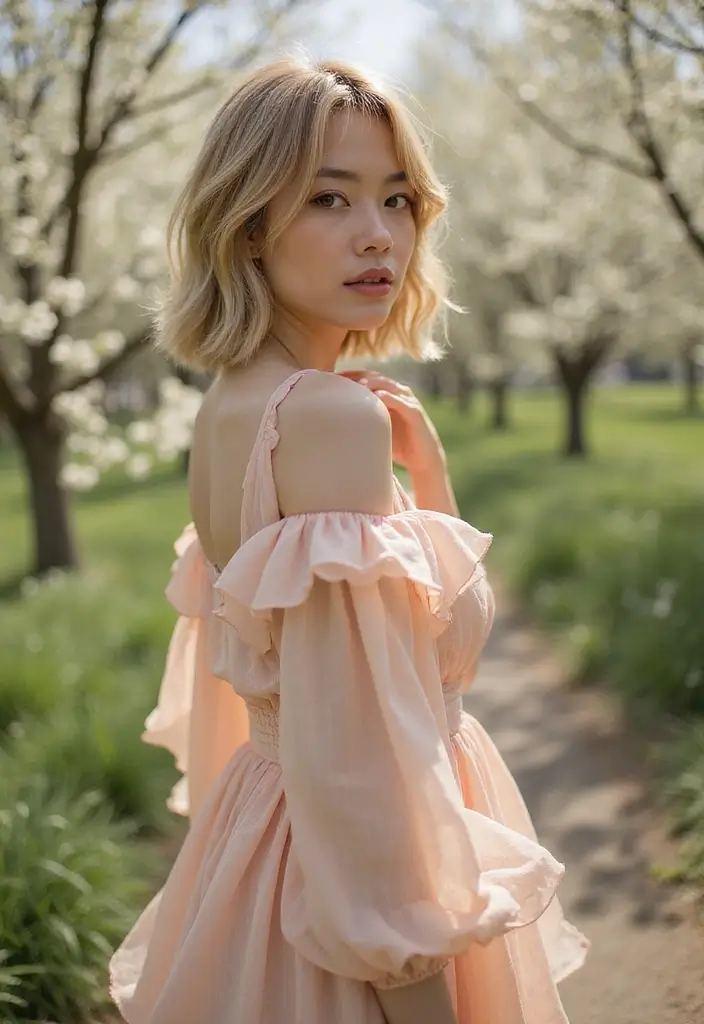
If you want more length but still keep a pixie feel, this cut is for you. The back stays a touch longer, and soft layers skim the jawline. The result looks fuller without adding extra work. It stays simple to manage on busy days.
Here is why this style helps thin hair. The longer back adds natural weight that keeps hair from looking flat. Face-framing layers bounce and catch light, so your hair reads thicker at a quick glance. It works with straight or slightly wavy textures, and you can tweak the part to change your look.
How to style it
– Start with towel-dried hair and a light heat protectant.
– Blow-dry using a round brush to lift roots and push the crown up.
– Roll the brush under sections to create soft movement.
– Finish with a cool blast to set volume and a subtle flip at the ends if you like.
Maintenance tips
– Get trims every 6 to 8 weeks to keep shape clean and ends healthy.
– Use a lightweight styling cream to keep the cut soft and movable.
– Apply a volumizing mousse at the roots for extra body without weighing hair down.
12. The Pixie with Highlights

If your pixie looks flat, highlights can change the game. Light reflects off the color and creates the illusion of more volume. You’ll see dimension in every angle, not just on the top.
What kind of highlights work best on a pixie?
– Balayage gives a soft, sun-kissed glow that blends with your base.
– Babylights add tiny pops of light for extra depth without shouting.
– Bold streaks bring contrast and live around the eyes and cheekbones.
Here is why placement matters. Put lighter tones toward the crown and near the temples. This draws the eye upward and creates lift at the roots. Keep the back a touch darker to keep the cut looking sharp.
Salon tips you can use
– Ask for a gentle application that follows your natural hair line. This avoids harsh lines.
– If you want color at home, try a semi‑permanent shade for a soft transition. Do a strand test first.
– Schedule highlights every 6 to 8 weeks to keep brightness even and prevent roots from showing.
Care and maintenance
– Use a color‑protecting shampoo and conditioner after every wash.
– Rinse with cool water to help lock in shine.
– Limit heat and always use a heat protectant when styling.
Styling to show off your highlights
– Apply a light mousse to damp hair. Dry with a diffuser for lift.
– Style with a touch of lightweight pomade at the ends for texture.
– Finish with a clear gloss to make the color pop.
Quick decision guide
– Choose balayage for ease and glow.
– Pick babylights for subtle depth.
– Go bold if you want a definite frame around your face.
Next steps: decide your highlight goal, book a consult, and plan care to keep your pixie vibrant and full.
13. The Elegant Side-Swept Pixie

If you have thin or fine hair, you want volume without extra bulk. The elegant side-swept pixie can give you both. This style uses longer top pieces that sweep to the side and tuck neatly behind the ear. It looks polished for work and classy for events.
Why this cut helps thin hair
The longer crown creates the illusion of length, so your hair reads fuller. The sides stay close to your head, which prevents any flat look. The result is a clean, refined silhouette that moves with you.
How to style it
Start with clean, dry hair. Apply a lightweight smoothing serum to the mid-lengths and ends. Add a touch of heat protection to guard against styling heat. Use a flat iron on small sections to smooth the top and create a gentle bend at the ends. Sweep the fringe area to the side. Tuck the longer piece behind your ear and keep it in place with a pin if you want extra hold. Finish with a light mist of spray to keep a neat, professional look.
Quick tips
– Secure the tuck: Use hairpins to keep the section behind the ear for a sleek finish.
– Deepen the side part: A strong side part adds flair and lift.
– Trim regularly: Schedule trims every 6 to 8 weeks to maintain shape.
Next steps
This cut works well with lightweight products and careful heat use. If you want more volume, swap in a subtle texturizing spray at the roots. Practice the tuck until it feels secure, and adjust the part to suit your face shape.
14. The Layered Pixie with Volume

The Layered Pixie with Volume
Thin hair can feel flat, but this cut brings lift and motion. A layered pixie creates height at the crown and a softer silhouette around the ears. The result is hair that reads as thicker and fuller, even when you touch it.
Here is why it works: short layers on top catch the air, while the sides stay slightly longer for balance. You don’t lose face shape, and you still see your eyes and cheekbones.
What to tell your stylist
– Ask for short layers on the crown to boost height.
– Keep the sides a touch longer for a sculpted frame.
– Request a texture cut so the ends move with you, not stay stiff.
At-home styling: quick and simple
1) Work a volumizing mousse through damp hair. It gives grip at the roots.
2) Blow-dry with a round brush, lifting at the crown. Aim the airflow upward.
3) Use your fingers to style the top into a soft peak or a smooth sweep.
4) Finish with a light texturizing spray or a small amount of matte paste for definition.
Maintenance that keeps the look sharp
– Schedule trims every 4–6 weeks to keep the layers fresh.
– Use a gentle shampoo and a lightweight conditioner to avoid weight.
– Sleep on a silk pillowcase to reduce frizz and preserve lift.
Next steps: try this on your next salon visit and note how your hair holds volume all day.
15. The Softly Curled Pixie

If your thin hair looks flat, a softly curled pixie can add life and lift. You get volume without a heavy style, and the look stays playful.
This pixie cut keeps hair off your face while giving your crown a gentle boost. It works with natural texture and needs little upkeep, making it a smart choice for a pixie cut for thin hair.
What this cut does
– It lifts the crown to create float and bounce.
– It makes natural waves or curls pop, adding texture.
– It stays easy to manage day to day.
– It frames the face with soft edges that flatter most shapes.
Here is why this style fits thin hair. By moving weight up and away from the scalp, it reduces a limp look and adds air at the roots. You get the illusion of thicker hair without longer lengths.
Styling steps
– Start with a light smoothing product at the ends to keep movement.
– Curl larger sections with a wand to create soft, loose waves.
– Pinch and gently lift the crown with your fingers, then mist lightly to set.
– For a casual finish, tousle and shake out a touch more volume.
Care and upkeep
– Use a heat protectant before curling to guard strands.
– Trim every 6 to 8 weeks to keep the shape fresh.
– Sleep on a satin pillowcase to reduce frizz and tangles.
Next steps
– Show this look to your stylist and ask for soft curls on top while keeping length around the ears.
– Try different curl sizes to find what adds the most lift for you.
A softly curled pixie cut is your secret weapon for adding volume to thin hair! Effortless, playful, and low-maintenance, it elevates your look while embracing your natural texture.
16. The Bobbed Pixie with Undercut
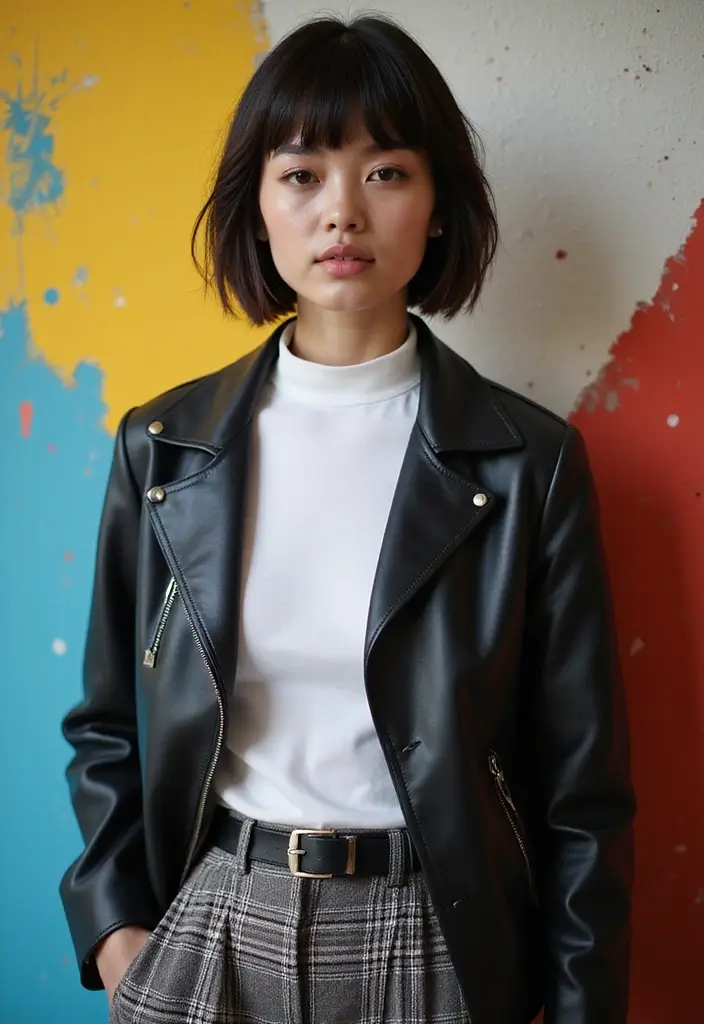
If you want more lift in thin hair, the bobbed pixie with an undercut could be the right move. Longer layers sit on top while a shaved undercut adds a bold contrast. The result is playful, modern, and surprisingly easy to manage.
This cut tricks the eye into thinking you have more volume on top. The difference is subtle but real, and you get a full look without extra bulk. You can keep it sleek for a polished vibe or shake it loose for a lively, edgy feel. Either way, it’s a style you can adjust day by day.
Styling options
– For a smooth finish, apply a strong-hold gel through the top layers and comb them into place. A quick round-brush blow-dry helps lift the crown.
– For an on-trend edge, rough-dry with your fingers and finish with a textured spray or matte paste. Don’t overwork it; a few rough touches are enough.
– Want a wow factor? Color the undercut. A bold shade peeks through when you move, giving you a private detail that’s easy to show off.
Care and upkeep
– Schedule a trim every 4 to 6 weeks to keep the undercut sharp.
– Use a light shampoo and skip heavy oils at the roots to avoid weighing hair down.
– If you color the undercut, use color-safe products and a heat protector when you style.
Next steps: try a 1–2 inch top length and a clean undercut to test how it feels on your head and lifestyle.
17. The Voluminous Pixie

The Voluminous Pixie
If you want height without heaviness, the voluminous pixie is your answer. It uses layers all through your hair to lift the top and give a full look. It stays polished for work and stylish for nights out.
Here is why it works. Layering creates tiny pockets of air at the scalp. When you lift the roots, hair looks thicker and moves with ease. The result is a soft, round silhouette you can wear daily.
Next steps: how to get the lift.
– Apply a volumizing mousse to damp hair. A little goes a long way.
– Blow-dry with a round brush, focusing at the roots to boost lift.
– Finish with a light texturizing spray to control flyaways without weighing hair down.
Maintenance matters. Trim every 6 to 8 weeks to keep shape and bounce.
Tips you can try today:
– Flip your head and blow-dry upside down for extra oomph.
– If flyaways pop up, smooth them with a touch of styling oil or a light spray.
– For very fine hair, keep products light to avoid heaviness.
This cut is easy to wear and pairs well with many outfits. It adapts to your mood and stays comfy all day.
18. The Playful Pixie
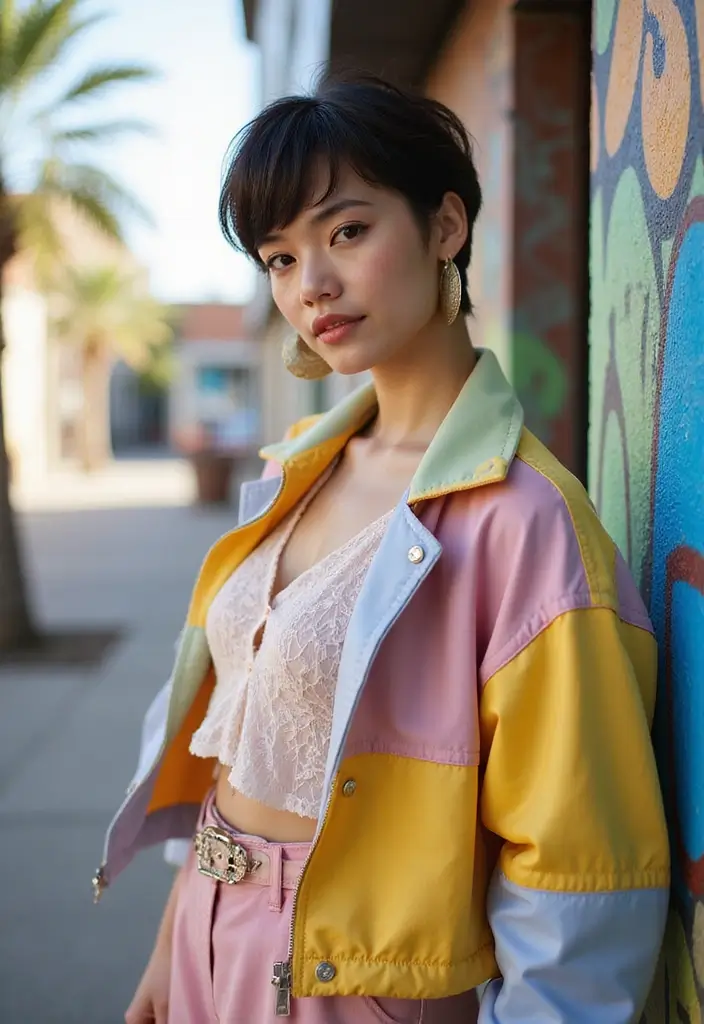
The Playful Pixie helps if thin hair feels flat. It adds lift without weighing you down. This cut uses choppy layers to create light texture. You get movement that looks natural from morning to night.
What makes this pixie work
– Short, jagged layers add texture.
– Light texture products keep bounce without stiffness.
– A soft finish keeps the hair from looking flat.
How to style it at home
– Start with clean hair. Apply a pea-sized amount of texturizing spray at the roots.
– Dry with a diffuser on low heat. Tilt your head down and lift the crown with your fingers.
– When dry, break up the layers with fingers. Avoid heavy brushing.
– For more height, flip your head and shake the roots briefly. Tuck the sides behind your ears for a playful look.
– Schedule trims every 4 to 6 weeks to keep the shape.
Tips for best results
– This cut shines with thin hair when kept around the ears. It’s easy to switch to a night look by adding a touch more product.
– If you want extra volume on day two, try a light root-lift powder.
Next steps: practice, adjust products, and enjoy the bounce. With practice, this look becomes a daily go-to.
19. The Edgy Pixie with Color

Here is why you should try an edgy pixie with color. You get short, clean lines that lift the face. A pop of color adds life to thin hair and makes it look fuller. You can tailor color to your vibe, from bold blocks to soft highlights.
Color ideas
– Mix two shades for depth and movement.
– Choose one bold shade for a striking look.
– Try a brighter color at the crown and a softer tone at the sides.
Care and maintenance
– Use color-safe shampoo and conditioner to keep the shade from fading.
– Schedule regular touch-ups every 4 to 6 weeks to keep the edge crisp.
– Apply a heat protectant when styling with heat tools.
Styling and placement tips
– Use a small amount of lightweight wax or cream to sculpt the pixie.
– Style from the roots up to lift the crown.
– Let the color catch the light by tousling with your fingers.
– A peekaboo color at the nape or edges can surprise with flair.
Next steps
– Talk with your stylist about length and color placement.
– Ask for a cut that hugs the scalp yet shows color at the tips.
– Plan for upkeep and budget, as frequent trims may be needed.
20. The Pixie with a Twist
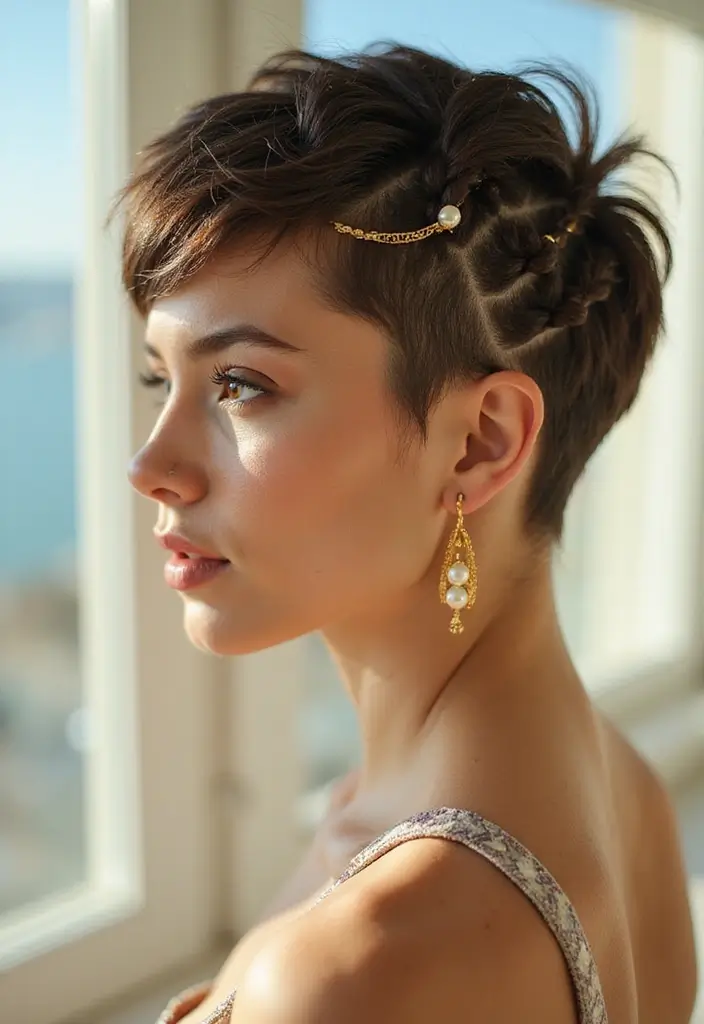
If you want a pixie that looks full without extra effort, try the simple pixie with a twist today. It adds texture with small twists or braids tucked into the crown. The result is movement and lift, not bulk. This style suits thin hair and busy days.
Why this works for thin hair
Twists break up flat strands. They catch light from different angles, making your hair read thicker. The result is visible lift at the roots and texture around the edges.
Fast styling plan
– Start with clean, damp hair and apply a light texturizing cream for grip.
– Make 2–4 tiny twists or micro braids at the crown and pin them softly in place so they sit neatly.
– Mist a lightweight spray to hold the shape without weighing hair down, then check in the mirror.
– Diffuse or air-dry with a gentle touch to keep lift at the scalp all day.
– Trim every 4–6 weeks to keep the cut neat and balanced.
Tips for different vibes
– Fine hair? Keep twists loose for maximum volume.
– For a party look, release one twist for a playful finish.
– Sleep on a silk pillowcase to reduce frizz and protect texture.
Next steps
Give this twist on your pixie a try. Start small, then tweak the twists to match your mood.
21. The Chic Pixie

If you have thin hair, you want a cut that makes it look full without heavy layers. The chic pixie fits. It uses clean lines and a soft shape to lift the crown and brighten your face. The style sits close to the head, but the top can have a gentle lift that reads as volume. This makes your hair look thicker, even on fine strands. It works well for many ages and occasions, from desk work to a night out.
Here is why it works. Use a flat iron for a sleek, polished finish. It glints in light and emphasizes the lines. If you want a casual vibe, tousle the top with your fingers and a light texturizing spray. A soft wave at the crown also adds movement without bulk. You can switch looks in minutes, depending on your plan for the day.
Maintenance tips
– Regular trims to maintain shape.
– Use a shine spray for added glow.
– A light touch of product is enough; let the cut do the work.
– For extra lift, try a root-boosting mousse at the crown.
– Between washes, a quick dry shampoo refresh keeps volume.
With the chic pixie, you gain lift without damage. You can grow with care.
22. The Fluffy Pixie

If your thin hair lies flat, you want lift that lasts. The fluffy pixie gives a light, airy look with real bounce.
This cut uses soft layers. They move with you and lift at the crown. The result is a round, playful shape that stays easy to wear.
How to style
– Apply a volumizing mousse from roots to ends. It adds grip without feeling stiff.
– Blow-dry hair upside down. This pushes the roots up for instant height.
– Use a light texturizing spray. Work it with your fingers for natural movement.
– Get trims every 6 to 8 weeks. Regular shaping keeps the look clean and bouncy.
Note: This cut works best on thin or fine hair. It adds lift without weight.
Tips you can use
– Start with clean hair. Tilt your head forward and lift the roots as you dry.
– If hair slips flat, dry a little more at the crown and use a tiny amount of product at the roots only.
– For a softer edge, avoid heavy creams. A misty spray gives romance and lift.
Common questions
– Will it suit straight, fine hair? Yes, with the right layers and mousse.
– How does it grow out? The soft lines blend nicely as you go.
Next steps
Find a stylist who knows short cuts for thin hair. Bring photos and test the fluffy pixie in a quick session.
23. The Glamorous Pixie
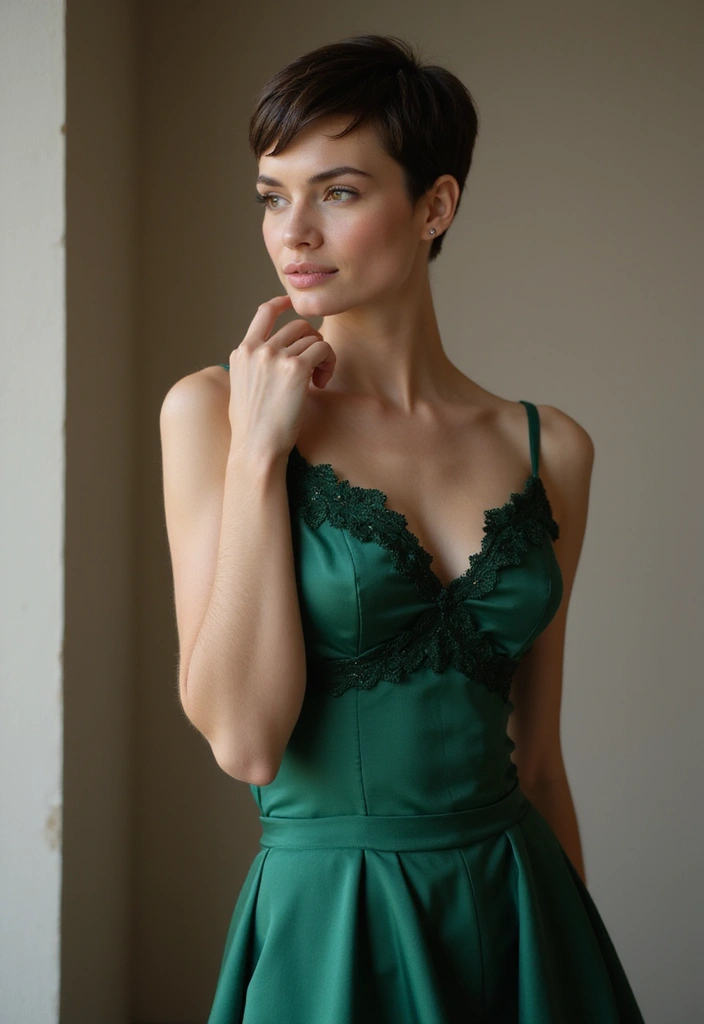
The Glamorous Pixie
You want a look that stays polished for special moments. The glamorous pixie gives a clean, refined vibe with little fuss. It looks sleek when you straighten the hair and elegant when you keep soft waves. A small smoothing serum helps you keep the finish smooth all day.
Ask your stylist for a crown lift. A longer layer on top creates height and makes thin hair feel fuller. Short sides frame your face and emphasize the top. Light layers prevent the top from lying flat, so your style reads as voluminous.
A touch of texture adds movement. Use a light styling paste at the roots and fingertips to create casual lift without stiffness.
Here is how to style for real life:
– Start with a fresh cut to keep the line crisp.
– Always use a heat protector if you heat style.
– Blow dry with a small round brush to push the crown up.
– Apply a tiny amount of texturizing product for volume at the roots.
– Finish with a light shine spray for a polished finish.
Maintenance tips
– Get trims every 4 to 6 weeks to keep the shape.
– Schedule regular touch ups to refresh the ends.
– Keep heat styling low and use the serum after washing.
24. The Retro Pixie
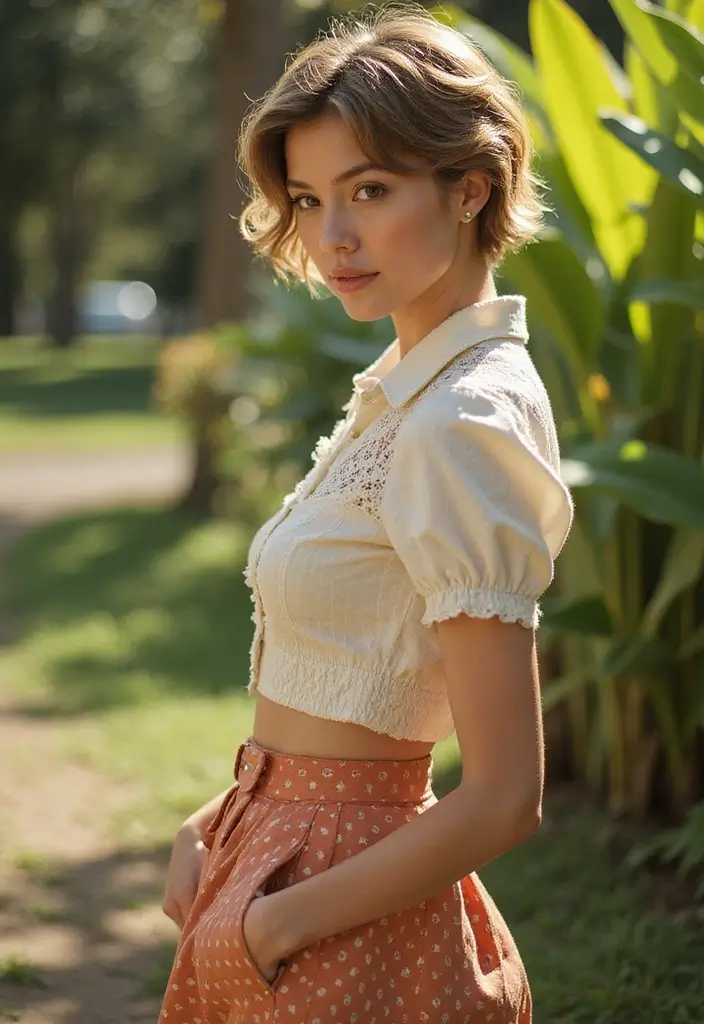
The Retro Pixie
If you want a vintage vibe that adds lift, the retro pixie is a smart pick. It uses soft, rounded edges that echo 60s and 70s styles. For thin hair, this cut adds shape without heavy product.
Here is why it works: a rounded crown catches light and the short sides keep volume at the top. It makes fine strands look thicker.
How to get it at home:
– Start with clean, dry hair. Blow-dry with a round brush to lift the roots.
– Mist a texturizing spray at the crown for grip and lift.
– Curl small sections with a curling iron. Use a short barrel and curl away from the face.
– Gently break the waves with your fingers to form a soft, vintage bounce.
– Finish with a light flexible hairspray to hold without stiffness.
– Trim every 4–6 weeks to keep the shape.
Styling tweaks:
– Try a slight side part to show off the cheekbones.
– Keep length a touch longer at the back for a gentle nape line.
– If hair is very fine, skip heavy creams; a dab of mousse adds body.
Style and care are quick once you learn the shape. This look suits many face shapes and works with different textures. With practice, you’ll master the soft waves and that classic curved silhouette.
25. The Funky Pixie

The Funky Pixie is for you if you want a bold style without hours in front of the mirror. It uses short layers that lift the crown and a splash of color to draw attention. With the right cut, thin hair can look fuller and have more bounce.
Here is why this cut helps thin hair
– Short layers add lift at the top.
– Texture and a touch of contrast catch light so hair looks thicker.
– A pop of color adds depth without weighing hair down.
What you need to try
– A low-commit color idea like semi-permanent dye or pastel.
– A cut with choppy layers around the crown and near the ears.
– Simple tools: gel, wax, or a texturizing spray.
Easy styling plan
– Start with a clean base and a small amount of mousse at the roots.
– Lift the roots with a wide-tooth comb and dry using your fingers.
– Shape the sides and crown with a strong-hold gel or wax.
– Add color accents with temporary chalks or sprays in small patches.
– Start small with one bold strand or a peek of color.
– Finish with a quick touch of texture spray for lasting lift.
Next steps
– Keep the look fresh with trims every 6 to 8 weeks.
– Let color fade naturally and refresh when you want.
– You can tweak it anytime.
Unlock the secret to fuller-looking hair: A Funky Pixie with short layers and vibrant color can transform thin hair into a bouncy masterpiece. Embrace the boldness and let your hair shine!
26. The Natural Pixie

If you want a low-fuss haircut that still feels fresh, the natural pixie is for you. It plays with your hair’s own texture, not a lot of strong products. The look stays simple while showing off your natural beauty. It’s easy to keep it light and comfy all day. You can pair it with soft waves or keep it straight. It dries fast and feels light on the scalp.
Here is why it suits thin hair. A natural pixie uses soft layers and space at the crown. Those tiny gaps help air move through, giving you instant lift without weight.
Style tips
– Work a lightweight styling cream through damp hair to boost texture without heaviness.
– Dry with your fingers to lift the roots and encourage natural shape.
– Try different partings for new vibes: a side part adds volume at the roots, a middle part keeps things even.
Care steps
– Get regular trims to keep the cut sharp and fresh.
– Use a good conditioner to protect moisture and shine.
– If you want more texture on certain days, a quick scrunch with your hands is all you need.
– Let air dry or use a diffuser on low heat to keep texture intact.
Next steps: start small. A little product, gentle drying, and a touch of parting can transform how your hair looks with minimal effort.
27. The Layered Pixie with Side Bangs
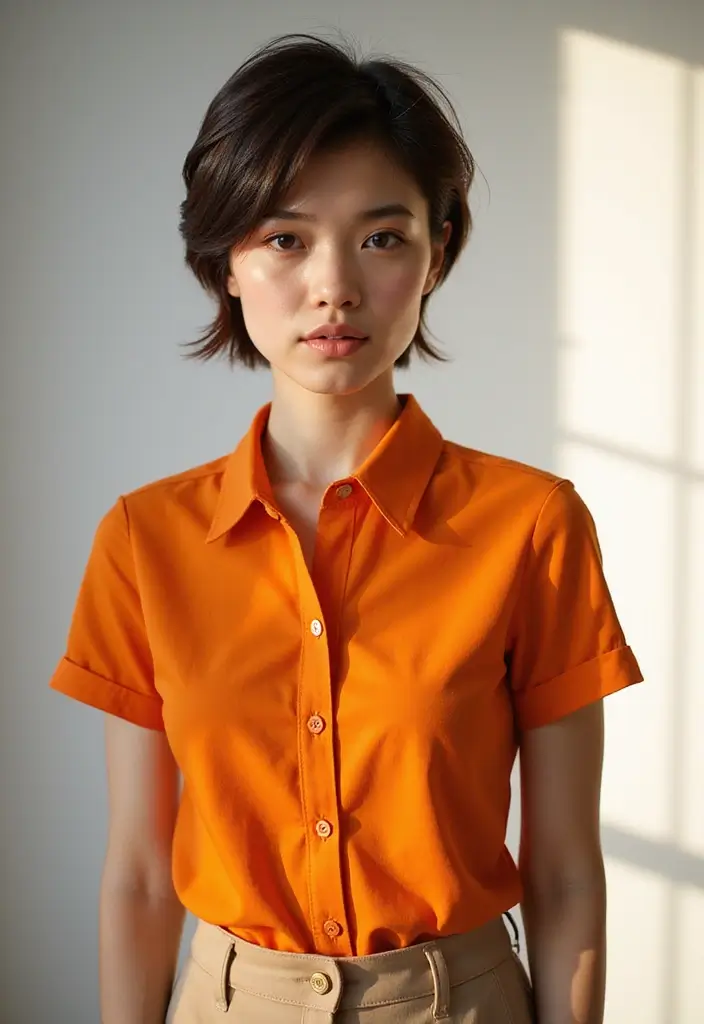
If your hair is thin, you want lift without weighing you down. The layered pixie with side bangs gives a fresh, youthful shape that looks modern. Layers add depth, while side bangs add a touch of playful elegance. Keep ends light so hair catches air and looks fuller.
Here is why it works:
– Layers create movement at the crown, so roots feel fuller.
– Side bangs draw attention to your eyes and balance a delicate jawline.
– The short length keeps hair bouncy and easy to manage, not flat.
How to style for volume:
– Pump a light mousse from roots to mid lengths.
– Blow-dry with a round brush to lift the crown.
– Sweep bangs to the side with a touch of light styling cream for control.
– Finish with a flexible-hold spray to keep shape without stiffness.
– For texture on no-wash days, use a light salt spray to add grip.
Next steps and upkeep:
– Schedule regular trims so the bangs stay fresh and the layers keep their shape.
– Tweak bangs as your style changes; they’re easy to reshuffle.
– Try a different part or angle every few weeks to stay current.
28. The Versatile Pixie

If you want hair that looks full but stays easy to manage, a pixie is a smart pick. For thin hair, this cut adds lift without extra weight. You can wear it sleek for work or tousled for weekends. The trick is a cut that lets you switch looks fast.
Here is why this style helps and how to use it.
How to get the most from this cut
– Start with a smart base. Tell your stylist you want more length at the crown and a clean line at the nape.
– Use a lightweight styling cream. It adds texture without weighing hair down.
– Apply a small amount to damp hair. Then blow-dry with a round brush for a smooth finish.
– To add texture, finger-scrunch as you dry. This wakes up fine strands and creates move.
– Try a salt spray or a light mousse for grip and body.
– Finish with a touch of matte paste at the ends to define tips.
– Schedule trims every 6 to 8 weeks. This keeps the shape neat and easy to style.
– For extra lift, flip your head forward and tease the crown as it cools.
Work look or weekend look, you tailor the vibe. For work, smooth the crown and keep sides tidy. For weekend, mess it up a bit with your fingers and go.
Common questions: Will hair feel flat? Not if you keep the crown longer and use light products. Is this hard to maintain? No, with regular trims and quick re-styling, it stays lively.
A versatile pixie cut can effortlessly lift your thin hair while keeping it manageable – perfect for switching from polished to playful in no time!
29. The Wispy Pixie
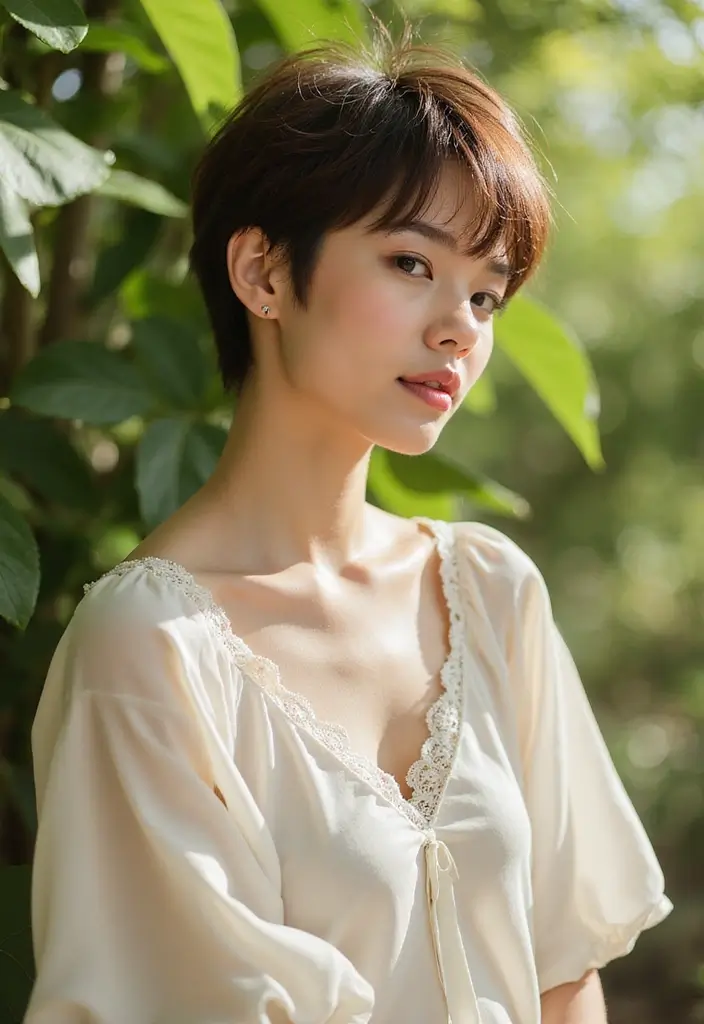
Here is why you should try the wispy pixie. If your hair is thin, you want lift without bulk. The wispy pixie uses soft, feathery layers to create lightness. Hair moves, not sits flat. It looks romantic, yet clean and easy to manage.
What makes it work? The goal is texture, not heavy layers. Shorter lengths keep the crown airy. The ends float around your face, catching light and shaping your features.
Here is how to get it and keep it looking fresh.
– Cut: Ask for soft, feathered layers that start near the crown and taper toward the ears. Keep the overall shape rounded so the style reads full, not flat.
– Style: Apply a volumizing spray at the roots. Blow-dry with a round brush to lift at the crown. Use a touch of light styling cream on the ends for texture.
– Care: Trim every 6-8 weeks to avoid heavy ends. Use a light hairspray to hold the shape without stiffness. Condition regularly to keep ends smooth.
Common questions: Can I wear bangs? A soft side fringe works fine. Will it last all day? A light mist helps.
Next steps: bring wispy pixie ideas and talk with your stylist about texture.
30. The Cute Pixie
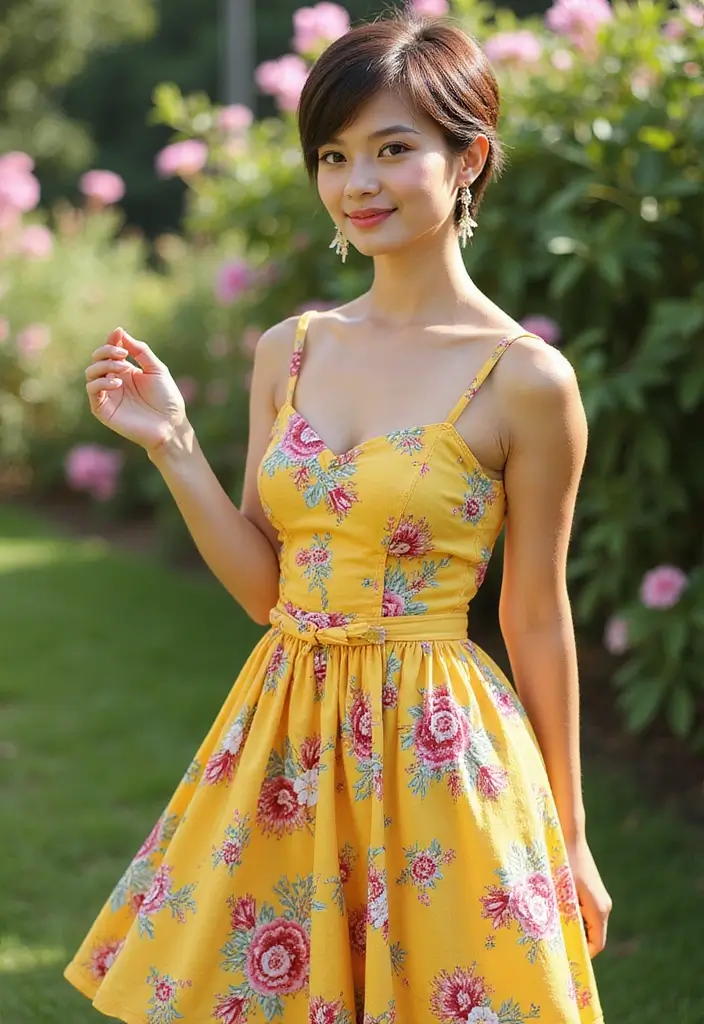
Facing thin hair that looks flat? The cute pixie can help. It uses soft layers and a rounded shape to lift the crown without adding weight. You get a playful, easy look that stays practical for daily life.
It adds height at the crown and keeps the sides neat.
Styling for volume
– Start with a light volumizing product to keep hair airy.
– Rub a small amount in at the roots and lift with your fingers.
– Let it air dry for a relaxed finish, or use a diffuser on low heat to boost lift.
– Finish with a pinch of texturizing spray at the ends to add movement.
– Switch your part to create lift on different spots.
– If you need lift later in the day, a dry shampoo at the roots helps.
Maintenance
– Regular trims every 6 to 8 weeks keep the round shape.
– Part your hair differently to refresh the look without more cuts.
– Use a soft brush and gentle strokes to avoid frizz.
Extras to try
– Try a slim headband or tiny clip for flair.
– A light wave with a low-heat curling wand can wake up the style.
– Keep a comb handy.
Next steps: show this to your stylist and ask for soft layers that frame your face.
Keep practicing. It gets easier.
Conclusion

Finding the perfect pixie cut for thin hair can truly transform your look and boost your confidence! With these 30 styles, there’s definitely a cut that will speak to your unique personality and lifestyle.
Don’t be afraid to experiment with colors, textures, and styling techniques to find what works best for you. Remember, the key to rocking a pixie cut is confidence and a little flair!
Frequently Asked Questions
What Are the Best Pixie Cuts for Thin Hair?
If you have thin hair, some of the best pixie cuts include the Classic Textured Pixie, Choppy Pixie, and Asymmetrical Pixie. These styles feature layers and texture that help add volume and movement, making your hair look fuller and more vibrant.
Each cut is designed to catch air and create lift, giving you that bouncy look you want without the need for heavy styling products.
How Do I Choose a Pixie Cut That Will Add Volume to My Thin Hair?
When choosing a pixie cut for thin hair, look for styles that incorporate texturizing techniques and layers. Options like the Voluminous Pixie and Layered Pixie with Volume are great choices. Ask your stylist for cuts that create height at the crown while keeping the sides shorter to enhance the overall fullness of your hair.
Consulting with a stylist can also help you find a cut that suits your face shape and personal style.
Are Pixie Cuts Low Maintenance for Fine Hair?
Absolutely! Many pixie cuts, such as the Sleek Pixie and Messy Pixie, are incredibly low maintenance for fine hair. These styles require minimal styling time and can be easily refreshed with a bit of product to enhance texture. You can enjoy a chic look without the fuss of long hair maintenance, making it perfect for those with busy lifestyles.
Can I Add Color to My Pixie Cut for Thin Hair?
Yes, adding color to your pixie cut can enhance the overall look of thin hair! Techniques like highlights or balayage can create the illusion of depth and volume. The Pixie with Highlights is a fantastic option, as the light-reflecting color adds dimension and makes your hair appear fuller.
Just remember to consult with a professional colorist to choose shades that complement your skin tone and maintain the health of your hair.
What Texturizing Techniques Should I Ask for When Getting a Pixie Cut?
When getting a pixie cut for thin hair, ask your stylist about texturizing techniques like point cutting, razor cutting, or using thinning shears. These methods create soft layers that add movement and volume without making your hair look bulky.
Texturizing can help your pixie cut look more dynamic and lively, which is especially important for fine hair that can otherwise appear flat.
Related Topics
pixie cuts
thin hair
volumizing haircuts
short hairstyles
texturizing techniques
trendy pixie styles
low maintenance hairstyles
easy haircuts
hair volume tips
choppy layers
stylish pixie
cute hairstyles








